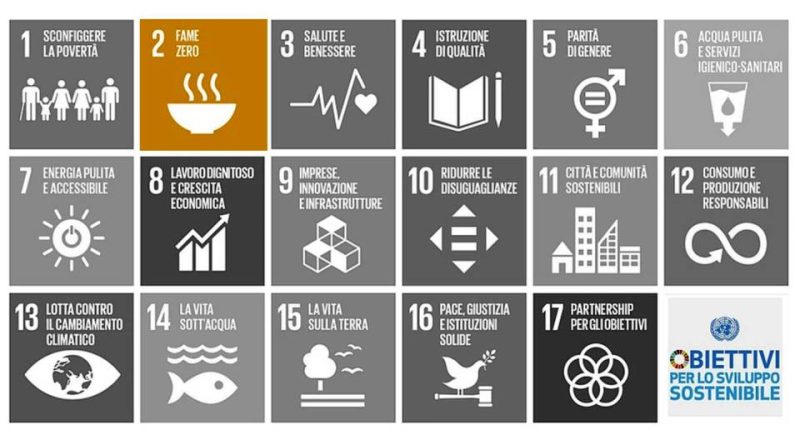2030 Agenda – Goal 2
2030 Agenda – Goal 2
End hunger, achieve food security, improve nutrition and promote sustainable agriculture.
Fighting hunger is the second goal of the 2030 Agenda program.
At present, malnutrition affects nearly 800 million people worldwide, especially women and children. The 2030 Agenda aims to eradicate hunger and all forms of malnutrition anywhere in the world over the next 15 years. Due to the rapid increase in demand for food worldwide, it is estimated that their production will have to more than double by 2050. About 70 percent of undernourished people depend, directly or indirectly, on agriculture for their livelihoods. survival: it is in fact small farmers who run the risk of malnutrition.
Objective 2 also includes a sub-objective that aims to eradicate malnutrition in all its forms. The quality of the food is in fact as important as the quantity. The objective also includes economic aspects, including doubling agricultural productivity and small farmers’ incomes by 2030. To ensure that increased food production does not harm the environment, Objective 2 also includes instructions to ensure sustainable agriculture.
2.1: By 2030, end hunger and ensure safe access to nutritious and sufficient food for all people, especially the poor and the most vulnerable, including infants, year-round.
2.2: By 2030, end all forms of malnutrition; achieve, by 2025, the internationally agreed goals against stunting and wasting in children under 5 years of age; meet the nutritional needs of adolescent girls, pregnant and lactating women and older people.
2.3: By 2030, double agricultural productivity and income of small-scale food producers, in particular women, indigenous peoples, farming families, shepherds and fishermen, including through safe and equitable access to land, other productive resources and inputs, knowledge, financial services, markets and opportunities for value added and non-agricultural occupations.
2.4: By 2030, ensure sustainable food production systems and implement resilient agricultural practices that increase productivity and production, which help protect ecosystems, which strengthen the ability to adapt to climate change, extreme weather conditions, droughts, floods and other disasters and which progressively improve the quality of the soil.
2.5: By 2020, maintain the genetic diversity of seeds, cultivated plants, farm and domestic animals and related wild species, including through diversified and appropriately managed seed and plant banks at national, regional and international level; promote access and fair and equitable sharing of benefits deriving from the use of genetic resources and associated traditional knowledge, as internationally agreed.
2.a: Increase investment, including through improved international cooperation, in rural infrastructure, agricultural research and training, technological development and plant and animal gene banks, in order to improve agricultural production capacity in developing countries , especially the least developed countries.
2.b: Correct and prevent trade restrictions and distortions in world agricultural markets, including through the parallel elimination of all forms of agricultural export subsidies and all export measures with equivalent effect, in accordance with the mandate of the Doha Development Round.
2.c: Take measures to ensure the proper functioning of food commodity and food derivatives markets and facilitate rapid access to market information, including food reserves, in order to help limit the extreme instability of food prices, food goods.
To achieve this impressive and complex objective, the entire world policy of all governments must therefore begin to implement commercial models and rules, as well as financial support, which are completely different from the liberal system.
Guido Bissanti

